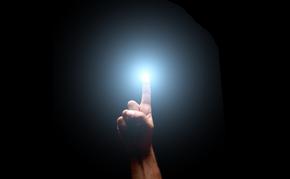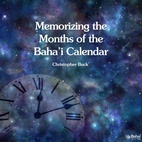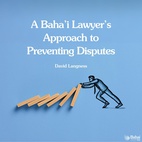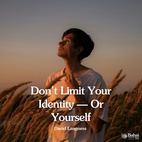The views expressed in our content reflect individual perspectives and do not represent the official views of the Baha'i Faith.
In the first decades of the 19th century, religious fervor overtook Christians, who believed that the Second Advent was approaching. Dubbed by the Seventh-day Adventist Leroy Froom as one of the greatest and most dramatic events in the history of the world, the expectation of the return of Christ literally swept the world. Many prominent figures embracing a cross-section of Christian denominations and including distinguished leaders and scholars were convinced that the Redeemer would appear between 1843 and 1845.
“So real was the hope of the Advent,” wrote Henry James Forman in The Story of Prophecy, “people were actually taking almost violent measures for it. It was the nineteenth century, yet the shooting stars of the year 1833, and the … halo-like rings around the sun in 1843, were objects of the most awesome speculation and discussion.”
As the gospel of a coming Kingdom swept through Asia, India, Europe and America, the Advent was preached to peasants, pashas, princes, bishops, priests, kings, American presidents and even the Congress of the United States. Representative of the fervor of the times was Joseph Wolff, amongst others, who spread the Advent doctrine to over 20 countries in the Middle East and Asia. In the northeastern United States, William Miller gave 4,500 lectures to over half a million people at a time when the population of the region approximated six million. At the peak of the advent fervor, more than a thousand clergymen could be found preaching the imminent return of Christ. By May of 1844 five million copies of Adventist publications had been distributed. Tens of thousands of anxious Christians scanned the skies for Christ’s descent on a cloud. Many of them sold their homes and possessions, forgave debts, restored stolen property, cashed out their bank accounts, gave away worldly goods, and donned ascension robes.
The excitement arose from Biblical prophecies, and the time calculations that many theologians, scholars and preachers made from those prophecies. For example, the disciples had asked Christ for a sign of his coming. As He sat upon the Mount of Olives the evening before His crucifixion, He replied:
When ye therefore shall see the abomination of desolation, spoken by Daniel the prophet, stand in the holy place. – Mathew 14:15.
As if biblical prophecies had been unsealed as a sign of the Last Day (Daniel 12:8), 19th-century Christian scholars, clergymen and eventually the faithful realized that the sanctuary would be cleansed after 2,300 days (Daniel 8:13-14). Because they understood days to represent years in Biblical prophecy (Ezekiel 4:6), they agreed that the starting point of this prophecy was an edict issued by Artaxerxes for the restoration of the Jewish temple or sanctuary in 457 BC. Depending on how they counted the transitional year from 1 B.C. to 1 A.D., their conclusion was that the Second Advent would occur between 1843 and 1844.
Mostly, though, Daniel’s prophecy of the First Advent had excited their expectations. Daniel had foretold 70 weeks for the Jewish people to make an end to their abominations and accept their Messiah (Daniel 9:24). In the interim (Daniel 9:25-27), the restoration of Jewish polity and the building of their temple would require 7 weeks, or 49 years. This period was to be followed by threescore and 2 weeks, or 434 years, until the start of the final week during which the Messiah (Christ) would confirm the covenant. Upon His crucifixion, Christ was 33 years of age. Little wonder, then, that the conviction of a Second Advent was so widespread in the early decades of the 19th Century; for 33 + 457 = 490 years or 70 weeks—which also pointed directly at the year 1844.
In 1844, the Bab declared himself to be the inaugurator of the long-promised kingdom of God on Earth.
Baha’is believe that the Bab’s coming, followed by the advent of Baha’u’llah and the establishment of the Baha’i Faith, renewed the sanctuary of the religion of God for the betterment of humanity:
The Revelation proclaimed by Baha’u’llah, His followers believe, is divine in origin, all-embracing in scope, broad in its outlook, scientific in its method, humanitarian in its principles and dynamic in the influence it exerts on the hearts and minds of men. The mission of the Founder of their Faith, they conceive it to be to proclaim that religious truth is not absolute but relative, that Divine Revelation is continuous and progressive, that the Founders of all past religions, though different in the non-essential aspects of their teachings, “abide in the same Tabernacle, soar in the same heaven, are seated upon the same throne, utter the same speech and proclaim the same Faith…”
The Forerunner of the Faith was Mirza Ali-Muhammad of Shiraz, known as the Bab (The Gate) Who proclaimed on May 23, 1844, His twofold mission as an independent Manifestation of God and Herald of One greater than Himself, Who would inaugurate a new and unprecedented era in the religious history of mankind…
The Founder of the Faith was Baha’u’llah (Glory of God), Whose advent the Bab had foretold. He declared His mission in 1863 while an exile in Baghdad. He subsequently formulated the principles of that new and divine civilization which by His advent He claimed to have inaugurated. – Shoghi Effendi, The Baha’i Faith – The World Religion: A Summary of Its Aims, Teachings and History.
In the century and a half since the Bab’s declaration, peoples of diverse cultures, races, religions and classes around the world have embraced the Baha’i Faith and its teachings of peace and unity. Baha’is believe that the advent of the Bab and Baha’u’llah signalize the promised return of all the prophets.
If the Christian world has largely missed Christ’s return because outwardly the physical signs in the heavens have not appeared, Baha’is believe that the Bab and Baha’u’llah have fulfilled the Old and New Testament prophecies, and that, as Mathew 7:16 says, you can recognize them by their fruits.
You May Also Like
Comments

















Bahá’í.org
Or you can see a lot of info at
Bahaiteachings.org